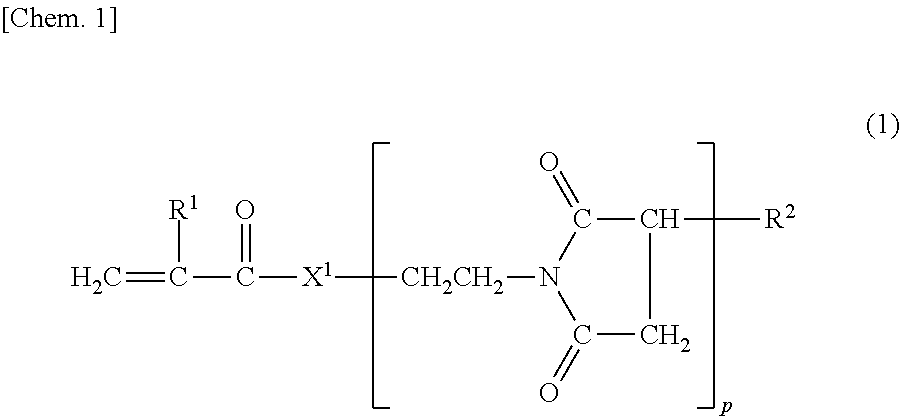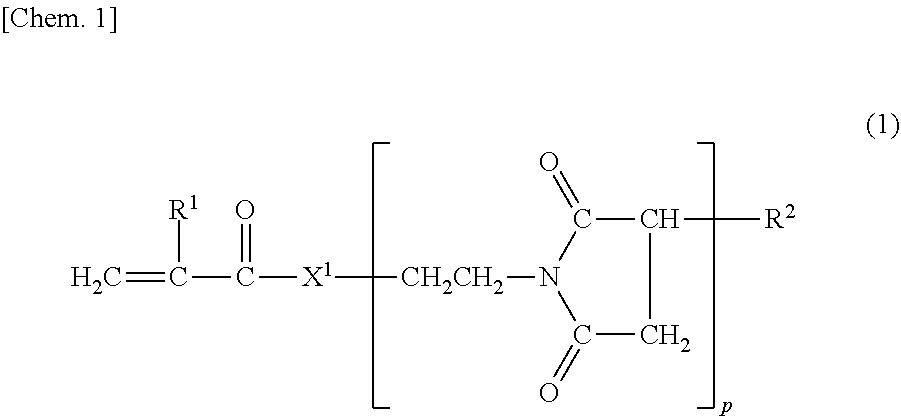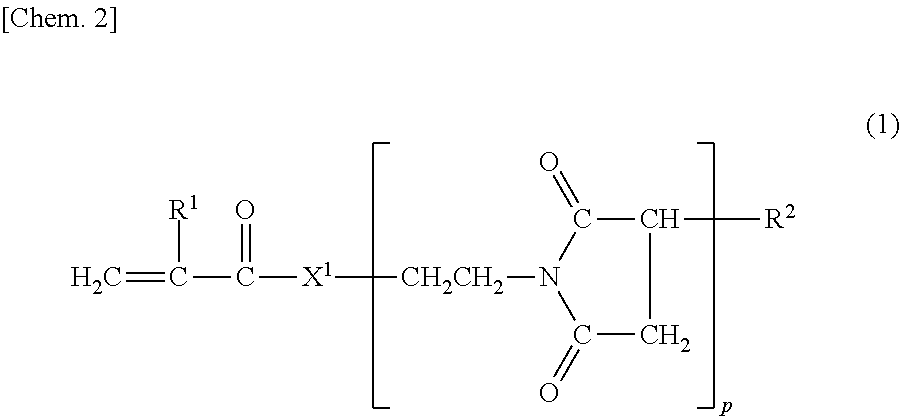Viscosity index improver and lubricating oil composition
a technology of viscosity index and lubricating oil, which is applied in the direction of lubricant composition, petroleum industry, additives, etc., can solve the problems of oil leakage and galling, and the lubricating oil composition is still insufficient in the viscosity index, so as to achieve excellent long-term stability, reduce the effect of viscosity during use and high viscosity index
- Summary
- Abstract
- Description
- Claims
- Application Information
AI Technical Summary
Benefits of technology
Problems solved by technology
Method used
Image
Examples
production example 1
[0193]A pressure-resistant reaction vessel equipped with a temperature adjuster and a stirring blade was charged with degassed and dehydrated cyclohexane (500 parts by weight) and 1,3-butadiene (30 parts by weight), and then tetrahydrofuran (2 parts by weight) and n-butyllithium (1.6 parts by weight) were added thereto. The mixture was polymerized at a polymerization temperature of 70° C.
[0194]After the polymerization rate (conversion rate) reached almost 100%, ethylene oxide (4.0 parts by weight) was added for reaction at 50° C. for 3 hours. Water (100 parts by weight) and a 1 N aqueous solution of hydrochloric acid (25 parts by weight) were added to terminate the reaction, followed by stirring at 80° C. for 1 hour. The organic phase of the reaction solution was collected in a separating funnel, and the temperature was raised to 70° C. Then, the solvent was removed over 2 hours at the same temperature under a reduced pressure of 10 to 20 Torr.
[0195]Thus, a polybutadiene containing ...
production example 2
[0198]A pressure-resistant reaction vessel equipped with a temperature adjuster and a stirring blade was charged with degassed and dehydrated cyclohexane (500 parts by weight), 1,3-butadiene (30 parts by weight), and styrene (3.3 parts by weight), and then tetrahydrofuran (3.8 parts by weight) and n-butyllithium (0.75 parts by weight) were added thereto. The mixture was polymerized at a polymerization temperature of 70° C.
[0199]After the polymerization rate (conversion rate) reached almost 100%, ethylene oxide (1.9 parts by weight) was added for reaction at 50° C. for 3 hours. A subsequent procedure was carried out as in Production Example 1. Thus, a hydrogenated butadiene-styrene copolymer containing a hydroxyl group at one end (Y1-3) was obtained.
[0200]The molecular weight of (Y1-3) was measured by GPC. The Mw was 3,600 and the Mn was 3,040 under the measurement condition 1. The Mw was 5,600 and the Mn was 4,750 under the measurement condition 2.
production example 3
[0201]A pressure-resistant reaction vessel equipped with a temperature adjuster and a stirring blade was charged with degassed and dehydrated cyclohexane (500 parts by weight) and 1,3-butadiene (30 parts by weight), and then tetrahydrofuran (3.8 parts by weight) and n-butyllithium (0.41 parts by weight) were added thereto. The mixture was polymerized at a polymerization temperature of 70° C.
[0202]After the polymerization rate (conversion rate) reached almost 100%, ethylene oxide (1.0 part by weight) was added for reaction at 50° C. for 3 hours. A subsequent procedure was carried out as in Production Example 1. Thus, a hydrogenated polybutadiene polymer containing a hydroxyl group at one end (Y′1-1) was obtained.
[0203]The molecular weight (Y′1-1) was measured by GPC. The Mw was 5,200 and the Mn was 4,730 under the measurement condition 1. The Mw was 7,840 and the Mn was 6,840 under the measurement condition 2.
PUM
| Property | Measurement | Unit |
|---|---|---|
| viscosity index | aaaaa | aaaaa |
| viscosity index | aaaaa | aaaaa |
| viscosity index | aaaaa | aaaaa |
Abstract
Description
Claims
Application Information
 Login to View More
Login to View More - R&D
- Intellectual Property
- Life Sciences
- Materials
- Tech Scout
- Unparalleled Data Quality
- Higher Quality Content
- 60% Fewer Hallucinations
Browse by: Latest US Patents, China's latest patents, Technical Efficacy Thesaurus, Application Domain, Technology Topic, Popular Technical Reports.
© 2025 PatSnap. All rights reserved.Legal|Privacy policy|Modern Slavery Act Transparency Statement|Sitemap|About US| Contact US: help@patsnap.com



